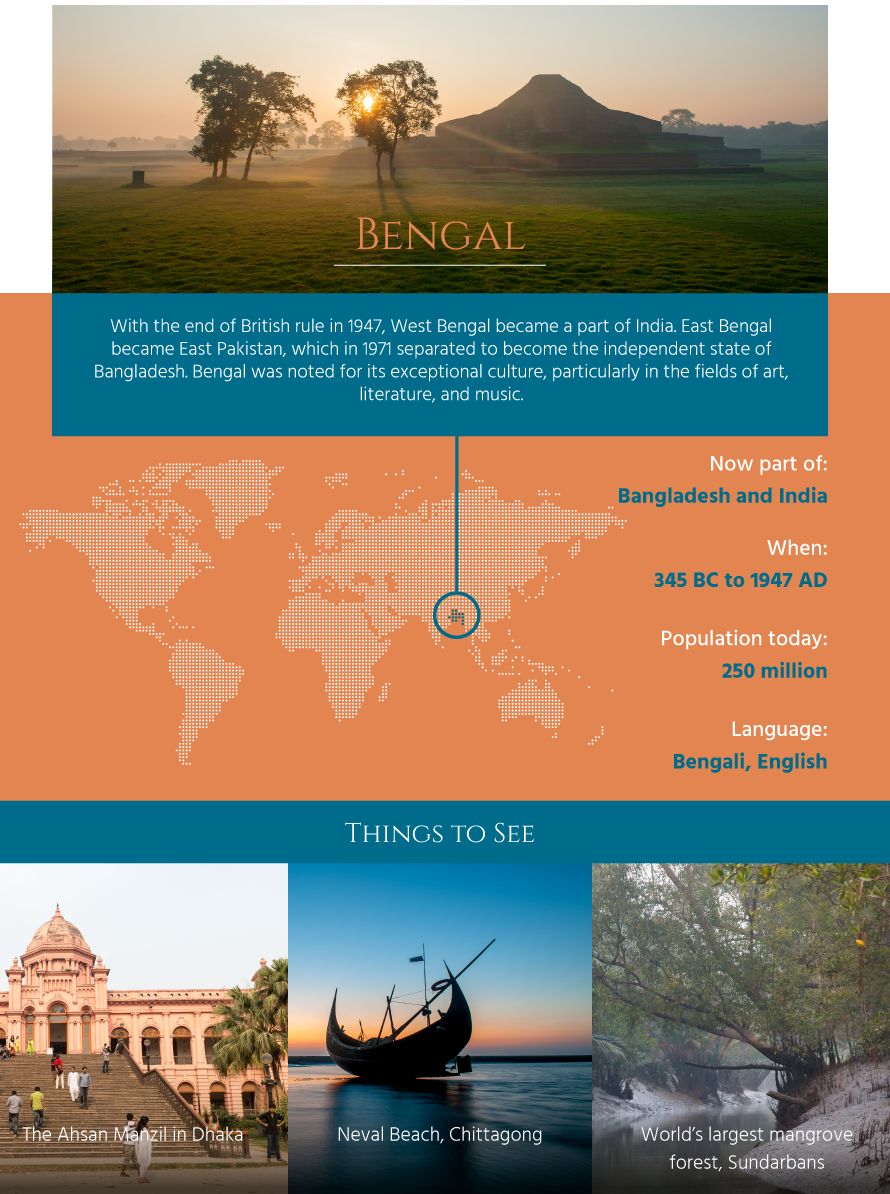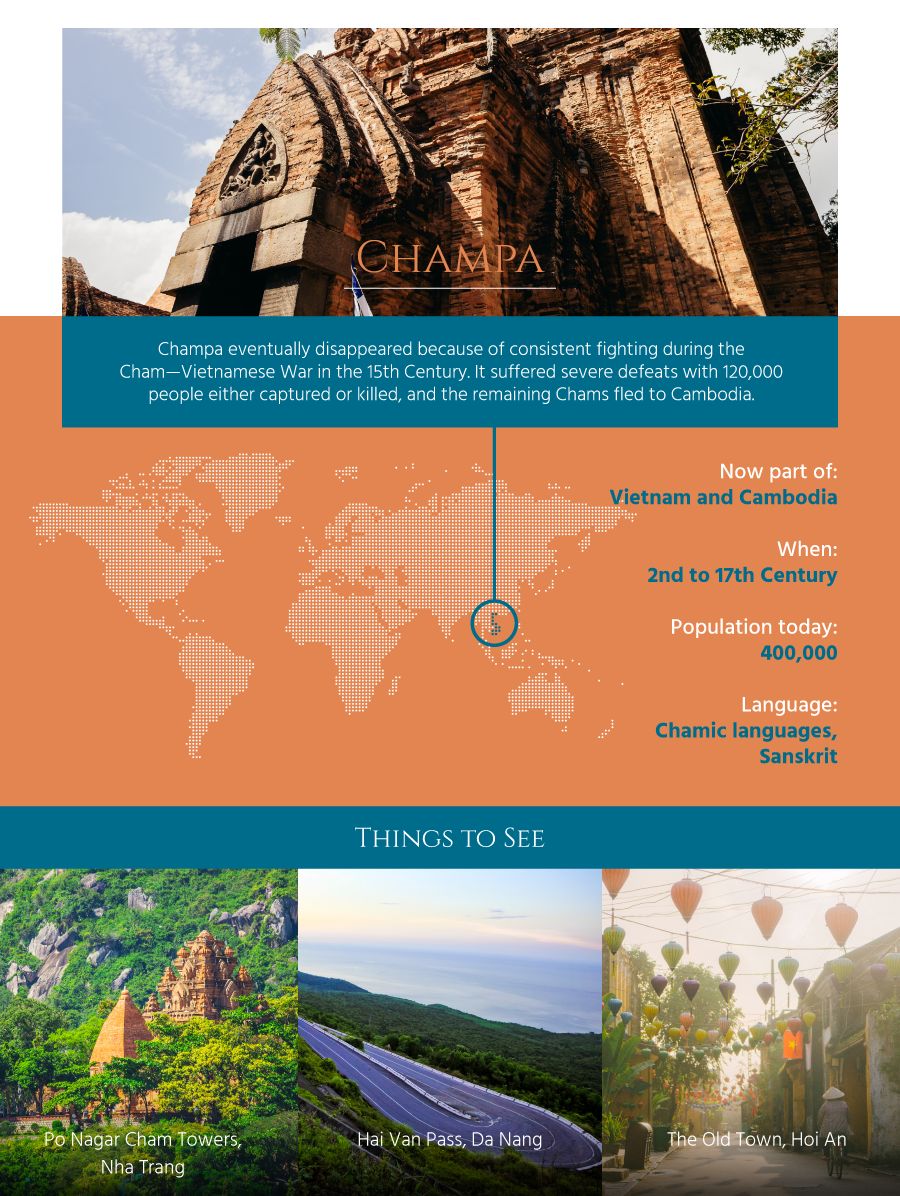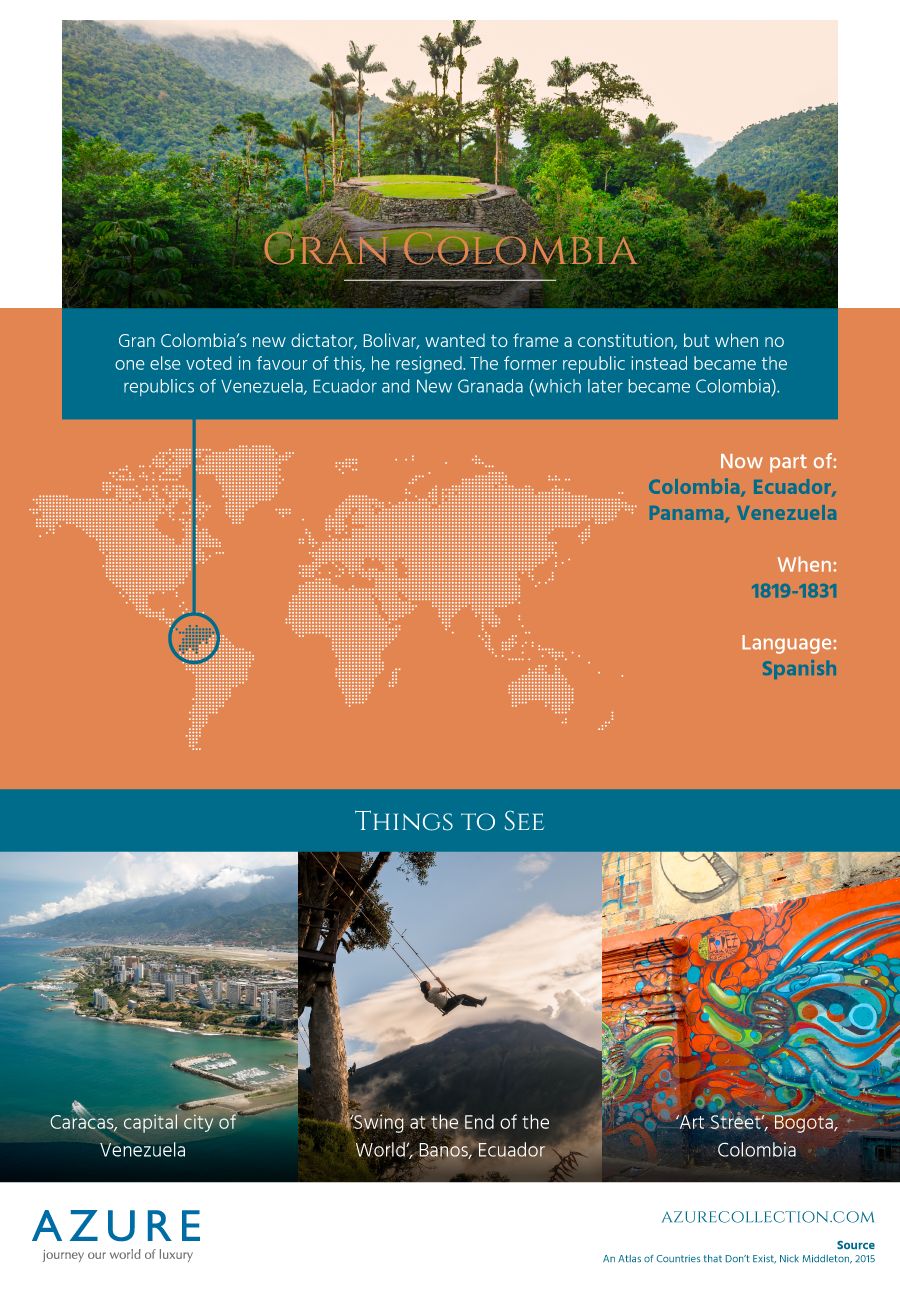The places we visit are charged with history. They each carry a heavy weight, which we sometimes try to understand and filter through our own lenses. Today’s infographic comes from azurecollection.com and deals with lost countries, places that once existed, but which history transformed.
The photos below are an interesting overview of some major border changes throughout the centuries. At the same time, they offer a tourist’s insight into what they could visit in a “lost country”, keeping its heritage in mind.

Each of the “lost countries” comes with a short description of its history, as well as some photo examples of place to visit. Some of them- for example Bengal- are still generally referred to as cultural regions today. For others, unfortunately, their former name was completely forgotten.

The Champa kingdom has lived on through the generations and today there are still Chams in Vietnam and Cambogia who speak dialects of Chamic languages.
The lovely and quiet city of Hoi An in Vietnam used to be a major port from the 15th to the 19th century. It was officially declared a UNESCO heritage site for its impressively conserved history. The city, only accessible by train or car from Da Nang, displays a mixture of local and foreign architecture, with Buddhist temples and colonial houses making up the French quarter. With its canals, small gondolas and colorful art workshops , Hoi An exudes a peaceful bohemian atmosphere and is well worth a de-tour from Ho Chi Minh.



We featured the swing at the end of the earth a while back on Tourism on the Edge. Right now, this playful attraction is associated with Ecuador. However, it was once part of Gran Colombia, a large region that used incorporate much of the northern part of South America and even part of Central America. During its political existence (1819 – 1831), the country was officially named ‘Republic of Colombia’. In order to distinguish it from today’s Columbia, historians changed its name.
Regional differences within Gran Colombia and the divide between federalism and centralism views eventually led up the the division of the states in 1831. The resulting countries were: Venezuela, Ecuador and Colombia (which during a later phase lost the territory of Panama).
Similar examples exist throughout Europe as well. The most poignant is the Soviet Union (also known as the U.S.S.R), that existed from 1922 until 1991. In its political peek, the socialist state covered eleven time zones from Asia to Europe and occupied about one sixth of the surface of the Globe. In its final years, the Soviet Union incorporated 15 socialist republics that later became independent countries.
Needless to say, there are so many interesting places to visit in the countries that used to be part of the red Union. If you feel bold enough, head to Moscow, where the chill air, unique culture and architecture will surely leave a mark. The Baltic countries- Estonia, Latvia and Lithuania- are also great for a visit.
What are your thoughts on this list of “lost countries”? Do you have any other examples of interesting places to see that carry the weight of history?

![Discovering the Lost Countries [Infographic]](https://cdn.tourismontheedge.com/wp-content/uploads/2019/04/discovering-lost-countries2.jpg)